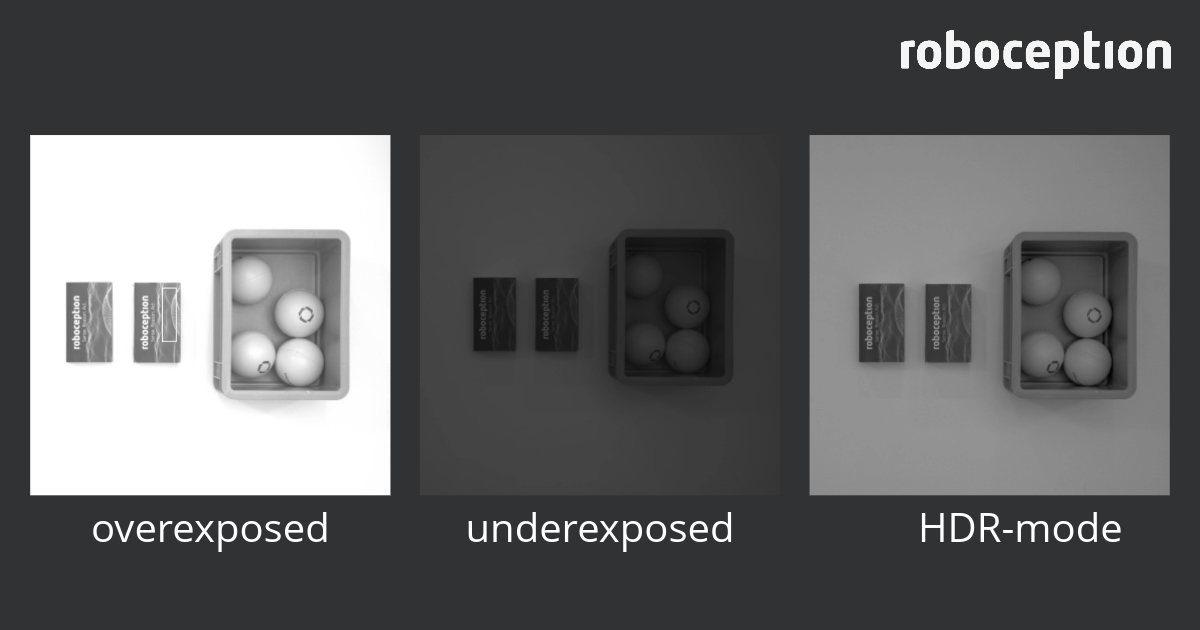Enhancing Robotic Perception: High Dynamic Range (HDR) in Machine Vision for the ODIN Project
 26 September,2023 - BY admin
26 September,2023 - BY admin
Enhancing Robotic Perception: High Dynamic Range (HDR) in Machine Vision for the ODIN Project
In the rapidly evolving world of robotics and intelligent automation, the ODIN research project is paving the way for revolutionary advances in robotic manufacturing systems. At the forefront: Roboception, an industry partner with expertise in 3D robot vision. In line with the project's goal, Roboception tackles critical challenges, most recently by introducing an HDR mode for the image acquisition to better address the different lighting situations in the various use cases in ODIN beyond model-based object detection.
High Dynamic Range Imaging, abbreviated HDRI or HDR, is a technique that has transformed imaging and photography. It allows users to capture a wider dynamic range of brightness than conventional digital imaging methods. Unlike the human eye, which can adapt to different lighting conditions, standard image sensors are often limited to 8 bits per channel, providing only 256 levels of brightness. This limitation results in overexposed highlights and underexposed shadows when capturing real-world scenes.
Dynamic range, which measures the range between the darkest and brightest tones in an image, becomes critical in industrial applications that deal with challenging and variable lighting conditions. When the spectral range in a scene exceeds the camera's dynamic range, critical image detail can be lost, resulting in washed out highlights and overly dark shadows.
HDR imaging, which uses images with more than 8 bits per channel (typically 32-bit float values), greatly expands the dynamic range especially for 3D stereo vision systems. This technology enables robotic systems to capture images without sacrificing detail in bright and dark areas of a scene.
Key benefits include:
- Expanded Dynamic Range: HDR mode increases the dynamic range during image capture, resulting in a wider measurement range. This means that robotic systems can operate effectively in a wider range of lighting conditions.
- Detail Preservation: HDR mode enables the inclusion of both brighter and darker areas of the target scene in a single image. This enables improved detection results for complex objects.
- Improved Scene Understanding: The HDR calculation combines multiple images taken at different exposure times to eliminate underexposed and overexposed areas. This improves the robot's ability to understand and interact with its environment.
While HDR technology offers significant benefits, it is important to note that it can reduce the frame rate and is best suited for static scenes. Objects within the scene should ideally remain stationary between exposures to ensure the successful creation of an HDR image.
High Dynamic Range in machine vision is just one example of the cutting-edge technologies that Roboception is leveraging to make robotic production systems not only technically feasible, but also efficient and sustainable for immediate implementation on the shop floor. In the ODIN project, the partners are shaping the future of manufacturing and robotics in Europe.
Get the latest news on ODIN right to your inbox!
Newsletter Permission: The ODIN project will use the information you provide in this form to be in touch with you and to provide updates and news. Please let us know if you would like to hear from us:
ODIN newsletter: You can change your mind at any time by contacting us at info@odinh2020.eu. We will not distribute your email address to any party at any time.

Comments (0)